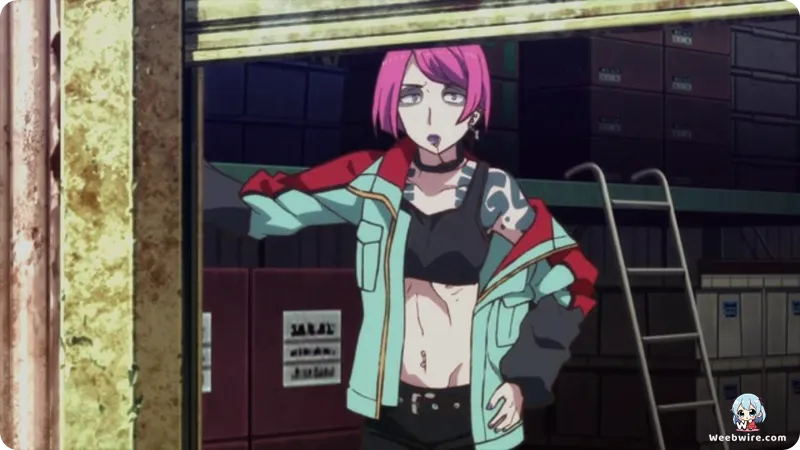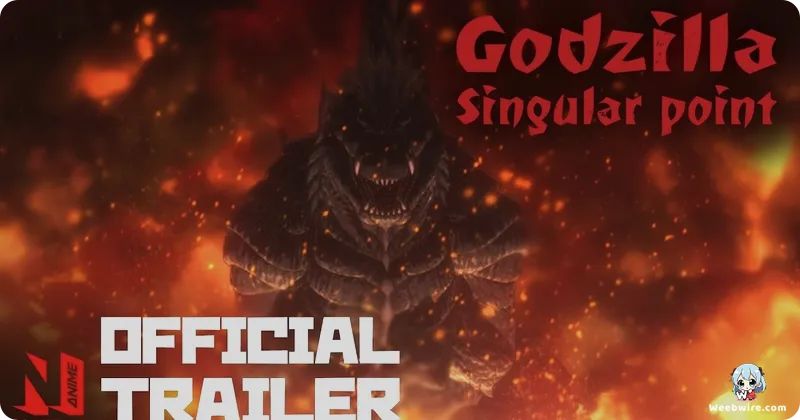Godzilla Singular Point: A Deep Dive into the Anime That Rewrote Kaiju Lore with Science and Stellar Artistry

Breaking from conventional kaiju narratives, the 2021 Netflix original anime, Godzilla Singular Point, presented an extraordinarily sophisticated and intellectually rigorous reimagining of the legendary monster. Far beyond a typical monster-versus-city spectacle, this series, masterfully animated by the acclaimed Studio Orange, plunged viewers into a complex tapestry of theoretical physics, advanced mathematics, and a radical reinterpretation of the iconic kaiju. It offered a compelling experience for those drawn to anime’s more profound and analytical dimensions, proving that even a well-established franchise can find new, intelligent life.
Studio Orange, celebrated for their groundbreaking CGI in titles such as Land of the Lustrous and Beastars, undertook the formidable challenge of animating Godzilla Singular Point’s dynamically evolving kaiju and intricate mecha. Their unparalleled skill in crafting fluid, expressive 3D animation proved indispensable, enabling action sequences and creature designs that expanded the horizons of what 3D anime could achieve. Unlike some 3D anime that can occasionally appear rigid, Studio Orange infused its characters and creatures with a remarkable degree of detail and motion, bringing them vividly to life. This was a crucial element when depicting a threat as universally recognized as Godzilla and his formidable counterparts, ensuring that the visual spectacle matched the intellectual ambition.
A Radical Reimagining of Kaiju Aesthetics
A particularly striking and perhaps lesser-known facet of Godzilla Singular Point lies in the audacious redesign of its monstrous inhabitants. The kaiju aesthetics were conceived by none other than Eiji Yamamori, a veteran animator whose impressive portfolio includes Studio Ghibli's Princess Mononoke and the genre-defining Neon Genesis Evangelion. Yamamori’s vision consciously diverged from the traditional, often reptilian, Godzilla imagery, embracing instead a paleo-biological and avian-inspired approach. Godzilla himself undergoes multiple distinct evolutionary phases throughout the series—commencing as the aquatic Gojira, progressing to the land-based Amphibia, then the quadrupedal Terrestris, and culminating in the terrifying Ultima form.
Each stage was not merely a visual enhancement but was meticulously designed to align with the anime’s intricate scientific narrative, illustrating various facets of the 'singular point' phenomenon and the mysterious 'Red Dust.' For instance, Godzilla Ultima’s design subtly incorporates elements hinting at higher-dimensional physics and its ultimate existential threat to reality, transforming it from a mere monster into a conceptual entity. Furthermore, other kaiju like Rodan were innovatively reimagined not as isolated threats, but as a vast, overwhelming swarm appearing in staggering numbers, cultivating a profound sense of existential dread unique to this iteration.

The Hard Sci-Fi Core
Beyond its visual grandeur, Godzilla Singular Point distinguished itself through an exceptionally dense, 'hard sci-fi' narrative. The plot masterfully intertwines real-world theoretical physics, advanced mathematics, and specialized scientific terminology. Concepts such as the 'Orthogonal Diagonalizer,' 'Singular Points,' and the enigmatic 'Red Dust' are not just fantastical catchphrases; the creative team, spearheaded by series composer and scriptwriter Toh EnJoe (a respected science fiction author in his own right), consulted with bona fide scientists to imbue these fictional elements with a veneer of plausibility. This unwavering commitment to scientific authenticity, even within a fantastical framework, frequently challenged viewers to grasp intricate explanations of paradoxes, higher dimensions, and quantum mechanics, setting it apart from virtually every other Godzilla title. This intellectual rigor contributed to its polarizing reception but simultaneously cultivated a devoted fanbase who deeply appreciated its ambition and groundbreaking genre approach.
Distinctive Character Designs and Auditory Excellence
While often eclipsed by the scientific exposition and explosive kaiju action, the human characters also possess a distinctive artistic appeal. Their designs were meticulously crafted by Kazue Kato, the acclaimed mangaka behind the beloved Blue Exorcist series. Kato’s signature style imbued the human cast with a fresh, engaging aesthetic that distinguished them from typical anime character designs, ensuring their memorability even amidst the show’s overwhelming concepts and colossal adversaries. This collaboration seamlessly blended her character expressiveness with Studio Orange's sophisticated 3D capabilities, creating a cohesive visual experience.
The series' auditory landscape stands as another underappreciated masterpiece. The musical score, composed by Kan Sawada, is a captivating synthesis of traditional Japanese instruments and contemporary electronic sounds. This unique fusion creates an immersive and utterly distinct auditory experience that perfectly complements the anime's intricate blend of ancient prophecy, cutting-edge science, and existential terror. Sawada’s score often masterfully builds tension with unsettling, almost alien soundscapes before erupting into thrilling, percussive action sequences, profoundly enhancing the overall sense of wonder and impending doom. It’s a testament to the show’s holistic approach to world-building.
In essence, Godzilla Singular Point dared to chart a new course, presenting a Godzilla narrative that was as much a profound scientific mystery as it was a breathtaking monster spectacle. Its deep explorations into theoretical physics, radical kaiju reinterpretations, distinctive character designs, and the meticulous animation provided by Studio Orange collectively forge a truly unique entry in the expansive Godzilla canon—an undeniable treat for those who relish grappling with complex intellectual concepts alongside their thrilling kaiju mayhem. It stands as a testament to what anime can achieve when it pushes the boundaries of storytelling and visual artistry.
Credits
Godzilla Singular Point
Author
Toh EnJoe (Series Composer)
Cover Art
Production Committee
Studio
Orange
Publisher
Toho
Producers





